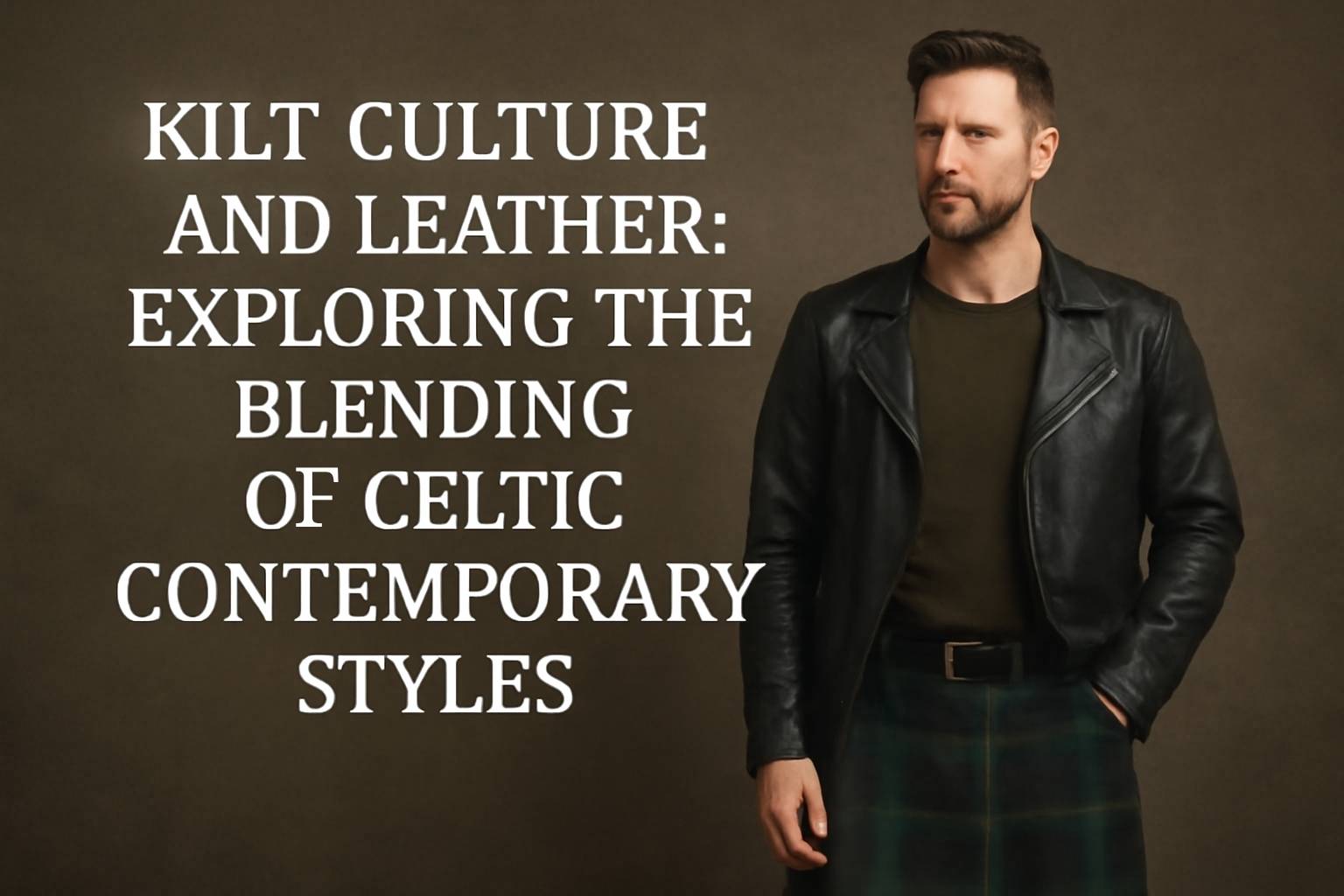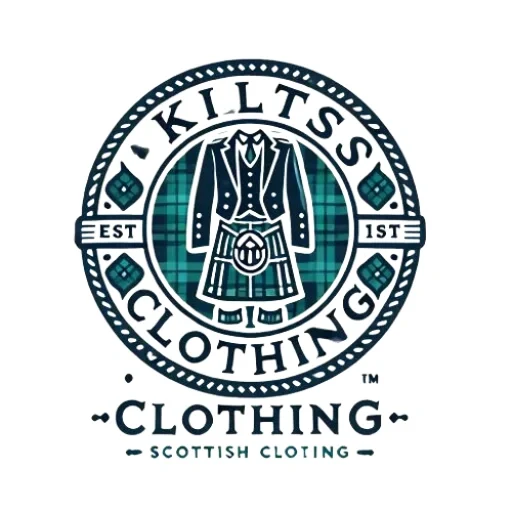Kilt Culture and Leather: Exploring the Blending of Celtic and Contemporary Styles

The kilt is much more than just a garment—it's a symbol of heritage, culture, and tradition. Originally crafted from wool and worn by the Scots and Irish, the kilt has stood the test of time, remaining an iconic piece of Celtic culture. But in the 21st century, the kilt has transformed. The traditional woolen fabric has been replaced with leather in a bold fusion of the ancient and the modern.
The merging of Celtic kilt culture with contemporary leather fashion is a striking shift in the world of fashion. While some may view this as a departure from tradition, it represents an exciting evolution of the kilt—a piece of heritage reinterpreted for today's fashion-conscious and forward-thinking world.
This article will explore how leather kilts have emerged as a unique blend of Celtic tradition and modern style, breaking boundaries and allowing wearers to express their individuality while still celebrating the cultural legacy of the kilt.
1. The Origins of Kilt Culture
The Historical Roots of the Kilt
The kilt has deep roots in Celtic heritage, particularly in Scotland and Ireland. Historically, kilts were made from woolen fabric, often woven in distinct tartan patterns, symbolizing family clans or regions. The first forms of kilts were worn as a practical and functional garment for the Highland Scots, offering comfort and ease of movement in the harsh environments of the Scottish Highlands.
The early Scottish kilts, or "Great Kilts," were large, draped garments designed to be wrapped around the body in a way that could provide warmth and protection against the elements. Both men and women wore these, and they were a practical piece of clothing in a rugged lifestyle.
Celtic Traditions and Fashion
Kilts have long been associated with the Scottish identity. The tartan patterns symbolize family clans, and the use of the kilt was often reserved for significant ceremonies, celebrations, and national events. It became a symbol of pride, unity, and strength, especially after the Jacobite Rebellions of the 18th century, when the British outlawed the wearing of kilts in an attempt to suppress Scottish culture.
However, while the tartan kilt became synonymous with traditional Scottish attire, its symbolism extended beyond Scotland. The garment evolved in Ireland and other Celtic regions, becoming a symbol of Gaelic pride and rebellion against oppression.
In this section, we establish the rich cultural history of the kilt, which laid the groundwork for its modern evolution.
2. The Rise of Leather Kilts in Modern Fashion
The Evolution of the Kilt
As the world of fashion evolved, so too did the kilt. By the 20th century, the traditional kilt was no longer just worn for practical purposes or cultural ceremonies. The kilt had entered mainstream fashion, and designers began experimenting with new materials to update this classic garment. One such innovation was the use of leather, a material that infused modernity, durability, and a new edge into the ancient design.
Why Leather?
Leather is a material that has always symbolized toughness, resilience, and strength. The decision to incorporate leather into the kilt design was a natural progression. Leather offers durability, making it ideal for creating a versatile, long-lasting garment. Unlike wool, leather provides more flexibility and has a sleek, polished look that aligns well with contemporary fashion trends.
The rise of leather kilts in fashion can also be attributed to the growing interest in alternative styles, especially in punk and rock subcultures. These groups sought to incorporate Celtic symbols and heritage into their clothing while making bold statements through leather, a material synonymous with rebellion and individuality.
The Blend of Celtic and Modern
What sets leather kilts apart is their ability to maintain the Celtic influence while incorporating modern design elements. The tartan patterns, pleating, and general silhouette remain faithful to traditional designs. Still, the leather fabric gives the garment a modern, edgy appeal. This fusion allows wearers to celebrate their Scottish heritage while embracing the aesthetics of contemporary street fashion.
In this section, we discuss the origins of leather kilts and how they gained traction in the world of fashion.
3. How Leather Kilts Redefine Contemporary Fashion
Versatility in Styling
One of the most attractive qualities of leather kilts is their versatility. While traditional wool kilts were often reserved for specific occasions like weddings or national events, leather kilts can be worn in a variety of settings. They easily transition from casual wear to formal occasions, allowing the wearer to make a statement in a variety of social contexts.
For instance, leather kilts can be paired with a simple t-shirt and boots for a casual day out, or dressed up with a formal jacket and accessories for a more sophisticated look. Whether worn in a streetwear style or as part of a punk or gothic ensemble, leather kilts remain relevant in the world of contemporary fashion.
Incorporating Leather Kilts into Modern Wardrobes
What makes the leather kilt so appealing to modern fashion enthusiasts is its adaptability. For men and women alike, the leather kilt offers an opportunity to break away from traditional, gendered clothing norms. The kilt can be styled with modern accessories like chains, belts, and scarves, enhancing its versatility.
The sleek look of the leather combined with the Celtic design elements creates a unique garment that transcends cultural boundaries, appealing to a diverse audience. Leather kilts are no longer seen as a "niche" garment but have become a staple in many fashion-forward wardrobes.
4. Global Influence and the Appeal of Leather Kilts
Cultural Appeal Beyond Scotland
While leather kilts have their origins in Celtic culture, they have found global popularity. From Europe to North America, the leather kilt has transcended cultural boundaries and become a symbol of individuality and style. The kilt's versatility, comfort, and bold appearance make it suitable for a wide variety of cultures and settings.
Incorporating Tradition in a Modern World
The blending of Celtic heritage and leather fashion is more than just a trend—it's a movement that celebrates both tradition and innovation. In countries like the United States, Canada, and even Japan, leather kilts are being embraced by individuals who want to honor their heritage while expressing a modern aesthetic.
Whether worn at music festivals, fashion events, or alternative fashion shows, the leather kilt is celebrated for its ability to retain the essence of traditional kilts while embracing the creativity and boldness of modern fashion.
5. Conclusion
In conclusion, the rise of the leather kilt marks an exciting fusion of Celtic culture and contemporary fashion. By incorporating leather into a traditionally woolen garment, the kilt has evolved into a fashion piece that speaks to both the past and present. Leather kilts are more than just garments—they are statements of individuality, heritage, and revolution.
Suppose you're looking to embrace both tradition and modernity. In that case, the leather kilt is a versatile, bold option that allows you to wear a piece of history with a contemporary twist. Whether you're attending a festival, making a fashion statement, or embracing your Celtic roots, the leather kilt is a unique way to express your style.
Explore our collection of leather kilts today and bring the fusion of Celtic and contemporary fashion into your wardrobe!
FAQ Section
Q1: What is the difference between a leather kilt and a traditional wool kilt?
Leather kilts are made from durable leather, offering a more modern, edgy look compared to the traditional woolen tartan kilts, which are often worn for formal or ceremonial events.
Q2: Can I wear a leather kilt to a formal event?
Yes! Leather kilts can be dressed up with formal accessories like jackets, cufflinks, and elegant shoes, making them suitable for various occasions, including weddings or galas.
Q3: How can I style a leather kilt for everyday wear?
Pair your leather kilt with a simple t-shirt, boots, and a jacket for a casual, stylish look. For a more rugged appearance, add a belt or chains to complete the ensemble.


